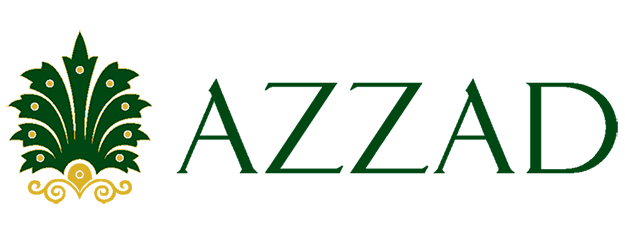Think of investing like baking a cake that requires flour, eggs, and milk. Depending on how much of each ingredient you use, you can get very different outcomes. The same is true of your investments. Balancing a portfolio means combining different types of investments in a recipe that is appropriate for you.
Too often investors either ignore or misunderstand the role that fixed income should play in their portfolios. In addition to providing a stream of revenue in retirement, it can also mitigate risk, helping you to reach your financial goals with less expected volatility.
GETTING AN APPROPRIATE MIX
The combination of investments you choose can be as important as your specific investments. The mix of various asset classes, such as stocks, fixed income, and cash, accounts for most of the ups and downs of a portfolio’s returns. (Please note that fixed income for Shari’ah-sensitive investors is limited to securities such as sukuk, participation bank deposits/notes, and other alternatives that pass Islamic guidelines.)
There is another reason to think about the mix of investments in your portfolio. Each type of investment has specific strengths and weaknesses that enable it to play a specific role in your overall investing strategy. Stocks are often chosen for their growth potential. Fixed income can help provide regular income. Still others, like cash, may offer safety or simply serve as a temporary place to park your money. Some investments can fill more than one role. Because you probably have multiple needs and desires, you need some combination of investment types, including fixed income.
Balancing how much of each you should include is one of your most important tasks as an investor. That balance between growth, income, and safety is called your asset allocation, and it can help you manage the level and type of risks you face.
BALANCING RISK AND RETURN
Ideally, you should strive for an overall combination of investments that minimizes the risk you take in trying to achieve a targeted rate of return. This often means balancing fixed income, a more conservative investment, against more aggressive investments like stocks, which are designed to provide a higher return but also involve more risk.
For example, assume you want to get a 7.5% return on your money. Your advisor may tell you that in the past, stock market returns have averaged about 10% annually, and fixed income roughly 5%. One way to try to achieve your 7.5% return would be by choosing a 50-50 mix of stocks and fixed income. It might not work out that way, of course. This is only a hypothetical illustration, not a real portfolio, and there is no guarantee that either investment will perform the same way it did in the past. But asset allocation gives you a place to start.
A retiree whose priority is having a regular stream of money coming in will probably need a very different asset allocation than a young, well-to-do working professional whose priority is saving for a retirement that is 30 years away.
You may have heard this widely known rule of thumb: To figure out the percentage of your investments that should be in stocks, subtract your age from 100 (with the remainder in fixed income). Of course, this is hardly a comprehensive strategy. Deciding on an appropriate asset allocation involves more than simply looking at your age. An Azzad investment advisor can help you with a plan that considers your goals, risk tolerance, and time horizon.
Azzad Asset Management offers model investment portfolios that recommend general asset allocations based on an investor’s age, risk tolerance, and time horizon. These can help jump-start your thinking about how much of your investments should be allocated to fixed income.
MANY WAYS TO DIVERSIFY
When financial professionals refer to asset allocation, they’re usually talking about overall classes: stocks, fixed income, and cash. Even within an asset class, consider how your assets are allocated. Because their returns don’t necessarily correlate closely with returns from major asset classes, they can provide additional diversification and balance in a portfolio.
For example, if you are investing in stocks, you could allocate a certain amount to large-cap stocks and a different percentage to stocks of smaller companies. Or you might allocate based on geography, putting some money in U.S. stocks and some in foreign companies. With fixed income, sukuk (Islamic bond) investments might be allocated by various maturities, with some money in participation bank deposits, which offer more stability but a still reasonable expectation of return.
Finally, at Azzad, we encourage all our clients to “Invest with Faith.” So, make sure your investments align with your values.
ASSET ALLOCATION STRATEGIES
There are various approaches to calculating an asset allocation that makes sense for you.
The most popular approach is to look at what you are investing for and how long you have to reach each goal. Those goals get balanced against your need for money to live on. The more secure your immediate income and the longer you have to pursue your investing goals, the more aggressively you might be able to invest for them.
Your asset allocation might have a greater percentage of stocks than either bonds or cash, for example. Or you might be in the opposite situation. If you are stretched financially and would have to tap your investments in an emergency, you will need to balance that fact against your longer-term goals. In addition to establishing an emergency fund, you may need to invest more conservatively than you might otherwise want to.
Some investors believe in shifting their assets among asset classes based on which types of investments they expect will do well or poorly in the near term. However, this approach, called “market timing,” is extremely difficult even for experienced investors. Recognize that no one really knows where markets are headed. It is generally best to make a plan and stick to it.
REBALANCING WITH HALAL FIXED INCOME
A lesson American Muslim investors learned the hard way from the market declines in 2008 was that a 100% stock portfolio is highly volatile. A fixed-income mutual fund like the Azzad Wise Capital Fund (ticker: WISEX) can help smooth out portfolio volatility.
Moreover, when the stock portion of your portfolio dips below your pre-determined threshold, you can decide to sell shares of WISEX and purchase stocks to maintain your desired allocation.
The opposite is also true. When markets rise, you can lock in your gains by selling stocks and purchasing WISEX. Of course, you will want to consider the tax consequences of your liquidations.
EVALUATION IS KEY
Remember that your allocation should change as your circumstances do. As you move closer to retirement, your allocation might shift to a larger percentage of fixed income to account for a shorter time horizon and a greater need for more stable income generation. Of course, market volatility does not warrant a change in your asset allocation, but life events may.
Think of it this way: A piece of clothing you wore 10 years ago may not fit now; you might need to update your asset allocation, too. To see if you are using fixed income in a way that is right for you, contact an Azzad advisor today.
Note: Information contained in this publication is not intended to replace specific advice or recommendations by your investment advisor. It is not intended to provide tax, legal, insurance or investment advice, and nothing in this publication should be construed as an offer to sell, a solicitation of an offer to buy, or a recommendation for any security. Unless otherwise specified, you alone are solely responsible for determining whether any investment, security or strategy, or any other product or service, is appropriate or suitable for you based on your investment objectives and personal and financial situation. Asset allocation and diversification cannot guarantee a profit or insure against a loss. There is no guarantee that any investment strategy will be successful; all investing involves risk, including the possible loss of principal. You should consult an attorney or tax professional regarding your specific legal or tax situation. Please check with your advisor for more information: 888.86.AZZAD or www.azzad.net.
Investments are not FDIC insured, nor are they deposits of or guaranteed by a bank or any other entity, so you may lose money. Azzad does not guarantee that your investment objectives will be achieved. Past performance cannot guarantee future results. Azzad only transacts business where it is properly registered or notice filed, or excluded or exempted from registration requirements. The Azzad Ethical Wrap Program is made available through an Investment Advisory Agreement and the firm’s ADV Part II brochure. The Azzad Funds are available by prospectus only. To request a free copy, including other important disclosure information, please call 888-862-9923, 8/2014©




